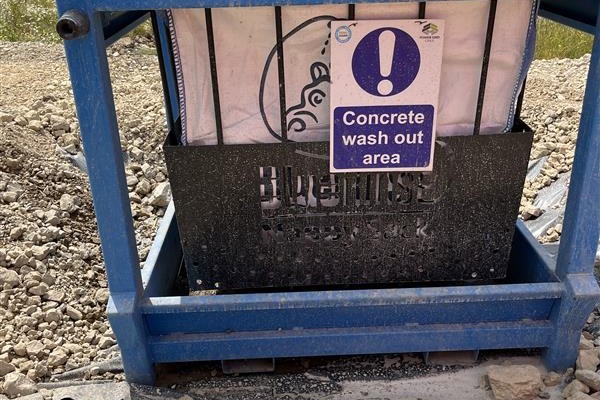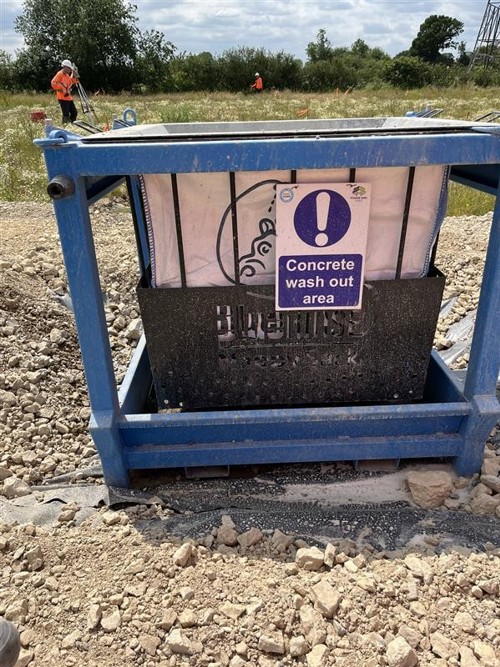- Energy
- 16 Oct 2025

Recently, our electricity transmission team introduced a permit system to meet Environmental Agency (EA) requirements. Following this, the team has been working collaboratively with its supply chain partners to improve concrete washout methods on site.
Concrete washout is the process and equipment used to manage wastewater and solid waste produced when cleaning concrete trucks, pumps and other equipment after a concrete pour. This has to be done responsibly to make sure that harmful run off does not pollute soil and nearby water resources.
When using traditional methods of concrete pour, the handling of high pH water can pose a significant environmental and health risks. Working alongside our supply chain, Power Grid Civils, we’ve introduced a Blue Rinse Nappy Sack Frame system.
This method uses a self-dosing bag which separates the solids, automatically reducing the pH in the water. The fabric of the bag contains Mudtech pH Blue, which is released into the water as it passes through the wall, producing a pH within the accepted levels.
This method has not only reduced the risks associated with high pH levels, including the potential for chemical burns, but also offers a more-cost effective alternative for washing down concrete chutes and equipment.
Our people have found the system to be robust, user-friendly and well-suited for both confined and open-site applications.
Following the use of the Blue Rinse method, Power Grid Civils samples the residual water to make sure that it’s within the agreed pH range before the water is reused or responsibly disposed of.
Reshma Edwin, Environmental Advisor at M Group Energy, said: “ As we continue to work to protect our people, the public and the planet, the introduction of the Blue Rinse system has brought significant benefits to the way we conduct concrete washout on site.”
Alan Clark, Environmental & Sustainability Manager at M Group Energy, said: “We’ve seen the method both enhance the quality of wash water on-site and reduce leakage risks commonly associated with traditional methods, representing a good practice model for managing concrete washout. We look forward to continuing to explore its use on our other projects, while also looking at ways to improve how we discharge the water produced.”




